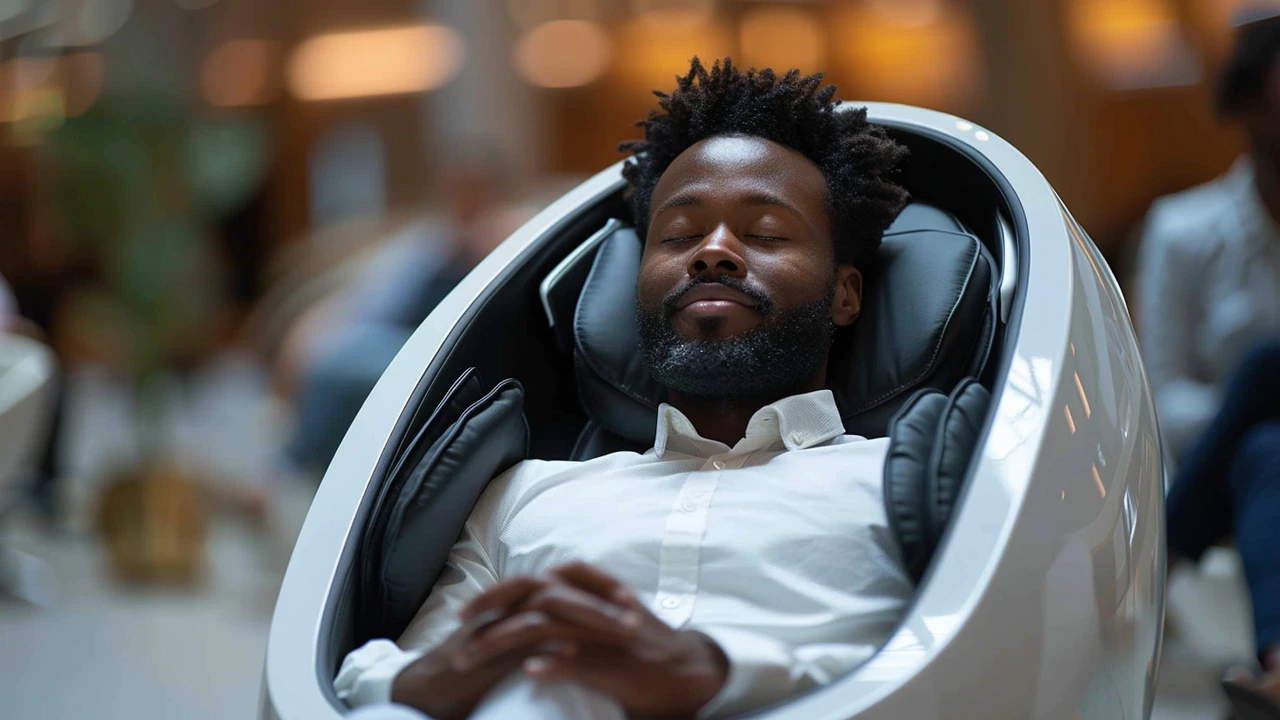Boosting Productivity and Wellness: The Essential Guide to Office Chair Massage Stations

The Rising Importance of Workplace Wellness
As we navigate through the demands of the modern work environment, the concept of workplace wellness has never been more crucial. The traditional notion that job performance is solely dependent on skills and hard work is gradually being replaced with a more holistic approach, recognizing the significant impact of mental and physical well-being on productivity and overall job satisfaction. In this light, forward-thinking companies are constantly seeking innovative methods to enhance their employees' health and morale. One such approach gaining popularity is the incorporation of chair massage stations within the office premises.
Ample research underscores the interconnection between stress levels and workplace efficiency. A recent study by the American Institute of Stress highlighted that job stress is one of the leading sources of anxiety and depression among adults, with considerable repercussions on their professional output and personal lives. By providing a space for physical relaxation and mental rejuvenation, chair massage corners can play a pivotal role in mitigating these stressors, fostering a more vibrant and productive work culture.
What is a Chair Massage and How Does it Work?
Before delving deeper into the benefits, let's first understand what a chair massage entails. Unlike traditional massages that require a full-body approach and a more private setting, chair massages are designed for quick and effective relief, typically administered over clothing. The focus is primarily on high-tension areas such as the back, neck, shoulders, and arms. These sessions can range from 10 to 30 minutes, making them a perfect fit for the workplace environment.
The practicality of chair massages in the office is unmatched. They are performed on a specially designed chair which supports the face, chest, and knees, allowing employees to comfortably lean forward while a certified masseuse works their magic. This setup not only ensures immediate relaxation of the muscles but also provides a much-needed break from staring at computer screens, promoting better posture and reducing the risk of strain injuries.
The Multifaceted Benefits of Office Chair Massages
Integrating chair massages into the office comes with a plethora of benefits. For starters, it significantly reduces physical discomfort and muscle tension, a common complaint among office workers. Additionally, these short sessions contribute to mental clarity, enabling employees to tackle tasks with renewed focus and energy. But the advantages extend far beyond the immediate effects.
Consistent access to chair massage services has been linked to improved job satisfaction, reduced absenteeism, and greater employee retention. Companies that have embraced this wellness initiative report a noticeable uplift in morale and a stronger sense of community among staff. Furthermore, by signaling a commitment to employee well-being, businesses can enhance their reputation, making them more attractive to current and prospective talent.
Creating a Successful Chair Massage Program in Your Office
Setting up a chair massage corner in the office is a straightforward process, but ensuring its success requires thoughtful planning. Key considerations include selecting a suitable area that ensures privacy and calm, scheduling sessions to minimize disruption to the workday, and choosing the right massage therapists who are not only skilled but also understand the dynamics of a corporate setting.
It's crucial to communicate the benefits and guidelines of the massage program to employees effectively. Providing clear information on how to book sessions, what to expect during the massage, and any relevant health and safety measures will encourage greater participation and ensure a smooth operation.
Overcoming Common Obstacles to Implementation
While the concept of a chair massage corner is appealing, some businesses may face challenges in its implementation. Concerns about cost, space limitations, and skepticism regarding its actual benefits are common hurdles. However, these obstacles can be overcome with creative solutions such as offering massages as a perk for achieving specific milestones, utilizing unused office areas, and presenting data on the positive impact of such wellness initiatives on productivity and job satisfaction.
Furthermore, engaging employees in the decision-making process and seeking their feedback on the program can help in tailoring it to meet their needs and preferences, thereby increasing its effectiveness and acceptance.
Conclusion
Incorporating chair massage services into the workplace is a testament to a company's investment in its employees' health and happiness. The benefits of such an initiative are manifold, affecting not just individual well-being but also the broader organizational culture and performance. As businesses continue to evolve, embracing holistic approaches to workplace wellness, such as chair massages, will be pivotal in building resilient, motivated, and harmonious teams poised for success.





